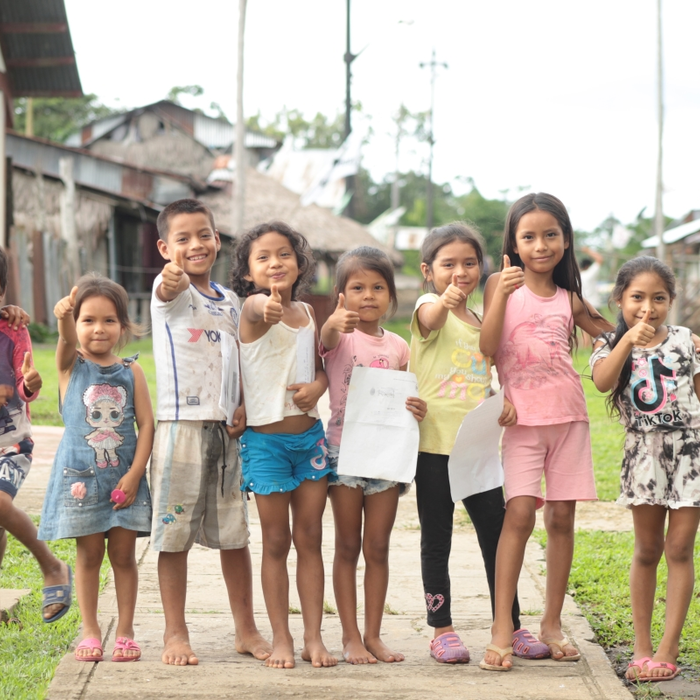Three Best Practices for Accelerated Education Programs from DRC
The DRC Merges Formal and Non-Formal Education Through Custom, Collaborative Work
 Photo Credit: USAID
Photo Credit: USAID
More than 263 million children are out of school around the world, oftentimes due to poverty and conflict. In the Democratic Republic of Congo (DRC), as in many other countries, Accelerated Education Programs (AEP) are becoming a more common approach. The purpose of these programs is to create inclusive education opportunities for students who have fallen behind or perhaps have never started school. To learn how the DRC is able to effectively educate children in a challenging conflict zone, we received insight from USAID’s Pascal Tshimanga and Jean Pierre Sangwa.
In the DRC, the Ministry of Social Affairs manages the non-formal education programs, including the Accelerated Education Program, in partnership with the Ministry of Education. USAID works with both ministries to provide support to students in the Accelerated Education Program. Here, we outline four best practices:
1. Cater USAID’s AEP to local needs.
Because the goal was to prepare students in the AEP to transition into the formal education program or receive a primary education diploma, it was important for staff to adjust the AEP curriculum to align with the objectives from the formal curriculum. Moreover, it was important to align the award dates so it was fully operational at the start of the school year calendar. A lesson learned from the past is that when the award is made just before the school year, there isn’t enough time for start-up hiring or training. The DRC’s AEP used a phased approach due to the timing of the award. USAID developed materials and training one quarter at a time and rolled out new materials each quarter, versus attempting to implement them all at once.
2. Collaborate across the formal and non-formal education systems.
In the DRC, while AEPs are overseen and regulated by the Ministry of Social Affairs, formal education is managed by the Ministry of Education. USAID knew that teacher training and curriculum development were best executed when teachers from the non-formal and formal systems were included. The master trainers included a wide range of teachers from both systems.
Inspectors supervise and oversee both the formal and non-formal education systems, ensuring continuity. It also helps ensure continuity in information in the student profiles, certification of learning, and a successful transition from the non-formal system to the formal.
3. Measure and monitor the students’ progress during and after completion of the non-formal program.
With the goal of ensuring students were properly prepared for entry into the formal system, USAID supported DRC AEPs to develop exit profiles based on the proficiency of learners at each AEP level to indicate whether they can advance to the next level. These profiles were built into the system to check that the learning standards were being met, and the learning standards outlined in each profile align with the learning standards for reading, writing, and math in the formal system.
4. Identify existing stakeholders and partner with them where appropriate.
One way this team partnered with others was through the Education Cluster. On a monthly basis, the Education Cluster brings together a variety of stakeholders ranging from civil society experts, teachers, the Ministry of Education, academics and project staff, to share information about where there are security issues and communities of internally displaced people. This information is used to launch new AEPs where children have missed out on education.
Because there are ongoing conflicts within DRC, Pascal pointed out that they do some third party monitoring to know which locations are safe. There are some places that USAID was not permitted to go, so they worked with intermediaries to get the curriculum out to teachers and students.
DRC is an integrated mission and one way they manage projects is to make sure there is overlap and a concentration of activities in conflict-affected zones. Education activities are implemented in an integrated way so they benefit from other programs. For example, an education activity may work side-by-side with an Economic Growth activity that supports cash transfers.
To develop Teaching and Learning Materials (TLM) in a truly collaborative, integrated effort, USAID supported the Ministry of Social Affairs to assemble a working group of teachers from formal and non-formal education, civil society experts and academics to review, revise, update and produce new AEP materials.
While every AEP is different, the program in the DRC shows that even in challenging regions, there is an opportunity to support non-formal education opportunities that build foundational skills for out-of-school children and youth. The results here show that AEP students learn quickly and have a chance to reenter, or enter for the first time, the formal education system in the DRC.
Nina Weisenhorn, a Senior Advisor on the Education in Crisis and Conflict team in USAID's Center for Education, provides an overview of accelerated education programs.
Related Blog Posts

Unlocking a World of Learning

Exploring Three Resources in the PSS-SEL Toolbox
